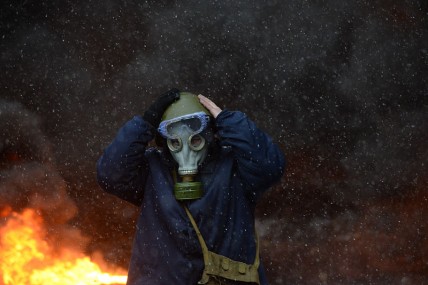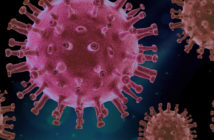
Photograph by Mstyslav Chernov/Unframe/Wikicommons
Last Sunday, a quiet morning in the Vatican started with Pope Francis making a symbolic gesture, calling for a halt to the violence in Ukraine, and ended with a savage battle between two doves, a crow and a seagull. As the Pope and two children released the doves from the Apostolic Palace as a sign for peace, a crow and a seagull swooped down in attack, to the shock of the observing crowds. Needless to say, the sign does not bode well for Ukraine’s political future.
The Vatican’s communication disaster aside, however, there are several reasons for cautious optimism. Though the protests and mayhem that plague the streets of Ukraine continue to increase in intensity, now is a better time than any to bring all sides to the negotiating table. The situation within the country is extremely complex, and the tug-of-war between the EU and Russia, with Ukraine trapped in the middle, has not been eased by the increasing escalation of internal discord within the country.
At the highest point of unrest since the protests began in November, following Ukrainian President Viktor Yanukovych’s decision not to sign an Association Agreement with the EU, constructive dialogue between the Ukrainian government and opposition will be key in ensuring the country does not dwindle into a state of civil war. Now more than ever, it is vital that both sides show a willingness to negotiate.
While European leaders have criticized how Ukraine’s police force has handled the demonstrations, calling their action a brutal suppression of the Ukrainian people’s freedom of demonstration, a video released by RT (unsurprisingly), shows protestors violently attacking police ranks at a city council building in the city of Vinnitsa. While protestors chucked pieces of furniture at the officers, the latter made no efforts at retaliation, illustrating a different tactic than the one so fiercely criticized early on in Kiev. It is evident that the violence is no longer a one sided ordeal, and that both sides are now engaged in vicious assaults on one another.
The situation it not a simple one, and Yanukovych is clearly anxious for Ukraine to maintain good relations with both the EU and Russia. While the government clearly sees the perks of closer ties with the EU, Yanukovych also perceives a strayed relationship with Russia as a threat to both the political and economic stability of the country. Given the significance of Russian-Ukrainian trade, as well as Ukraine’s reliance on Russia for its gas supply, it should come as no surprise that Ukraine takes the Kremlin’s threats seriously.
If Ukraine constantly seems torn between Western Europe and Russia, it’s because Ukraine is itself a country divided between East and West. While more than half the Ukrainian population associates itself with the EU, a large ethnic Russian minority is also present, which is difficult to ignore. These maps from the Washington Post illustrate this political and linguistic divide well.
Given the escalating violence, now is a vital time for action from both sides. President Yanukovych has already taken an unprecedented initiative and provided the opposition leaders with an offer. Unfortunately, both Fatherland leader Arseniy Yatsenyuk and heavyweight boxing champion Vitali Klitschko (Udar) rejected the respective posts of prime minister and deputy premier, on the basis that Yanukovych refuses to step down. The President also made an offer to dismiss the current cabinet (which is composed of his own supporters) if the opposition leaders were to accept the proposed positions. Prime Minister Mykola Azarov has announced his resignation and the Parliament voted to repeal the widely contested anti-protest laws enacted on January 16 in a clear attempt to resolve the political crisis.
The onus is now on the opposition, who should not hold out for the unrealistic prospect of snap elections being called, but instead seek to find common ground with the Party of Regions and fight for the future of Ukraine. Ukraine’s next elections are only one year away, which would give the opposition ample time to prove that they can govern as well as organize protests. Joint attempts to put a halt to the violence and search for a peaceful resolution to the crisis are crucial to ensuring the social and economic stability of the country.
Former President of the USSR Mikhail Gorbachev has also expressed similar concern in his letter to Putin and Obama. The letter, addressed to both leaders, explicitly states, “We cannot allow Ukrainians to fight with the Ukrainians. This is terrible absurdity”. A move towards peaceful negotiations between both sides is a necessary, as hard as that may seem at the moment.
Will the EU behave as the seagull and Russia as the black crow striking Ukraine from both sides? Will Russia succeed in destabilizing Ukraine and bringing it into its own sphere of influence while the EU lingers in the shadows? Or will both sides realize that it will be wise to work together to foster dialogue and ease tensions in Ukraine, as the worrying threat of a civil war erupting poses a grave danger to everyone? The answer to these questions remains to be seen in the next crucial weeks as government and opposition battle out their interests.




